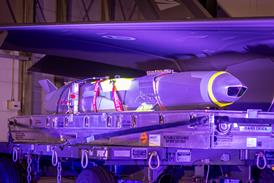Nearly two-and-a-half years after unveiling merger plans, Japan Airlines (JAL) and Japan Air System (JAS) completed their integration at the end of March. The move marked the elimination of the 16-year-old JAS brand from the Japanese market.
The two carriers announced plans to merge in November 2001 and after agreeing to some concessions won regulatory approval in April 2002. The merger - effectively a takeover by JAL of JAS - was formalised early in October 2002 when a new joint holding company, Japan Airlines System Corp, began trading.
Since then the two carriers have been integrating systems and on 1 April flight operations were consolidated under the JAL identity, with the new JAL international and JAL domestic divisions. From late June the holding company's name will also change, to Japan Airlines Corp.
The elimination of JAS as a brand was marked in a low-key manner, with the removal on 31 March of the last JAS sign behind a check-in counter at Tokyo's Haneda airport. There were also small ceremonies to mark the departure of the last JAS flight. All domestic flights operated by the enlarged JAL now use four-digit flight numbers instead of three-digit numbers.
JAL estimates the cost of integration in the 2004/5 and 2005/6 fiscal years to March will be ¥36 billion ($339 million), although it expects savings from the integration to amount to ¥63 billion annually from the 2005/6 fiscal year.
"We have completed the initial main task," says JAL Group chief executive Isao Kaneko. "We have integrated networks, sales, back-office functions, airport operations and IT. In the long term, we will consolidate fleet composition and restructure flight operations, but these are long-term targets and we are not committed to any detailed plans."
JAL and JAS now claim a combined domestic market share of around 50%, several percentage points higher than that of former market leader All Nippon Airways.
The JAS name dated back to 1988, when it was adopted to replace Toa Domestic Airlines, which was formed in the early 1970s through the merger of several domestic carriers.
Source: Airline Business























